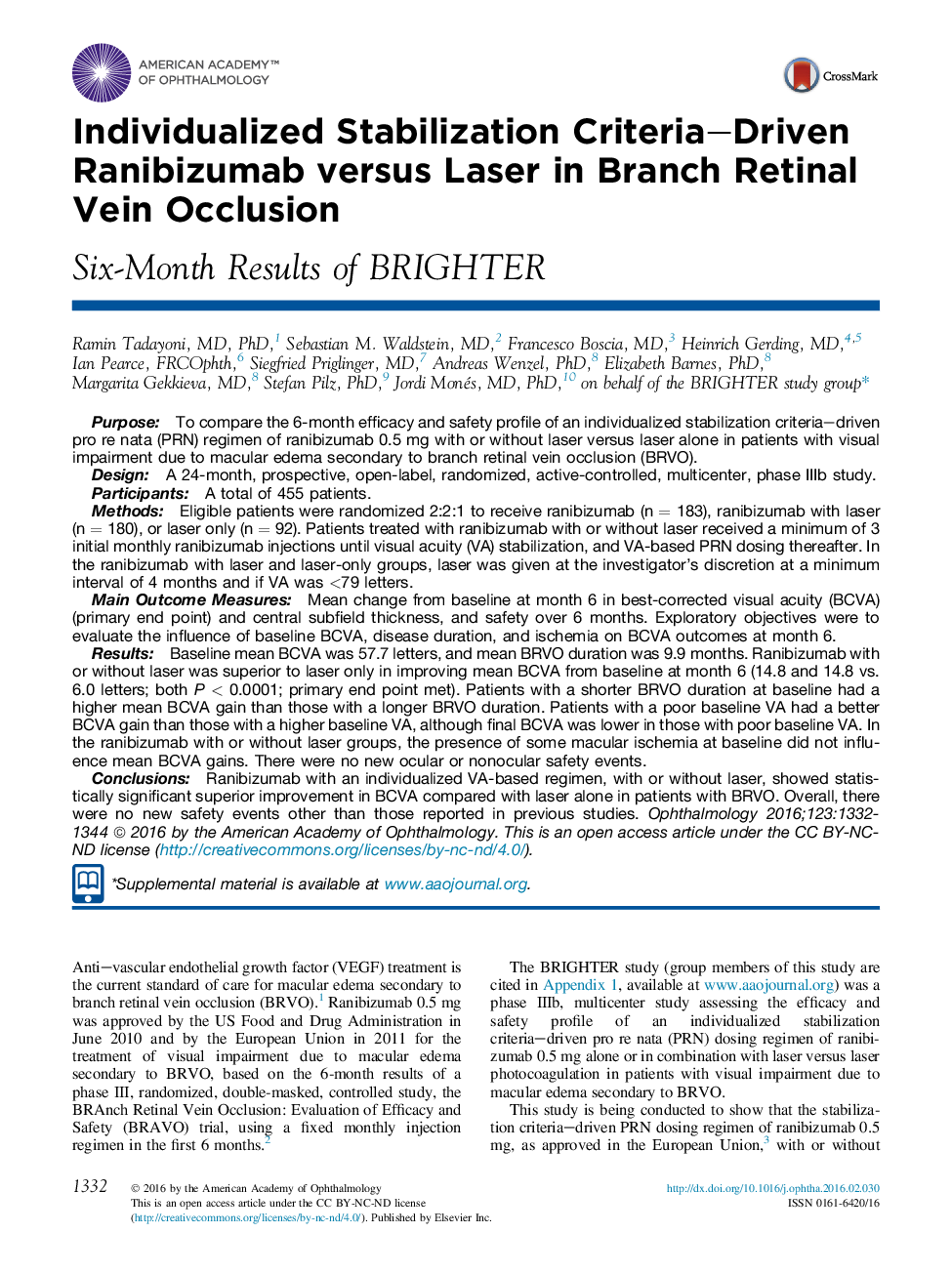| کد مقاله | کد نشریه | سال انتشار | مقاله انگلیسی | نسخه تمام متن |
|---|---|---|---|---|
| 6199438 | 1262398 | 2016 | 13 صفحه PDF | دانلود رایگان |

PurposeTo compare the 6-month efficacy and safety profile of an individualized stabilization criteria-driven pro re nata (PRN) regimen of ranibizumab 0.5 mg with or without laser versus laser alone in patients with visual impairment due to macular edema secondary to branch retinal vein occlusion (BRVO).DesignA 24-month, prospective, open-label, randomized, active-controlled, multicenter, phase IIIb study.ParticipantsA total of 455 patients.MethodsEligible patients were randomized 2:2:1 to receive ranibizumab (n = 183), ranibizumab with laser (n = 180), or laser only (n = 92). Patients treated with ranibizumab with or without laser received a minimum of 3 initial monthly ranibizumab injections until visual acuity (VA) stabilization, and VA-based PRN dosing thereafter. In the ranibizumab with laser and laser-only groups, laser was given at the investigator's discretion at a minimum interval of 4 months and if VA was <79 letters.Main Outcome MeasuresMean change from baseline at month 6 in best-corrected visual acuity (BCVA) (primary end point) and central subfield thickness, and safety over 6 months. Exploratory objectives were to evaluate the influence of baseline BCVA, disease duration, and ischemia on BCVA outcomes at month 6.ResultsBaseline mean BCVA was 57.7 letters, and mean BRVO duration was 9.9 months. Ranibizumab with or without laser was superior to laser only in improving mean BCVA from baseline at month 6 (14.8 and 14.8 vs. 6.0 letters; both P < 0.0001; primary end point met). Patients with a shorter BRVO duration at baseline had a higher mean BCVA gain than those with a longer BRVO duration. Patients with a poor baseline VA had a better BCVA gain than those with a higher baseline VA, although final BCVA was lower in those with poor baseline VA. In the ranibizumab with or without laser groups, the presence of some macular ischemia at baseline did not influence mean BCVA gains. There were no new ocular or nonocular safety events.ConclusionsRanibizumab with an individualized VA-based regimen, with or without laser, showed statistically significant superior improvement in BCVA compared with laser alone in patients with BRVO. Overall, there were no new safety events other than those reported in previous studies.
Journal: Ophthalmology - Volume 123, Issue 6, June 2016, Pages 1332-1344